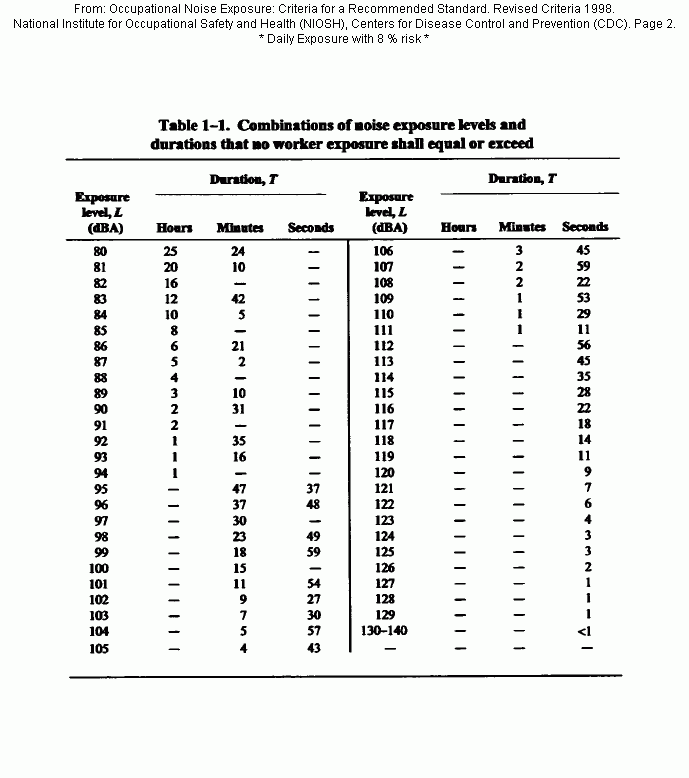OSHA sound/noise rules are in need of revision. This is according to the U.S. National Institute for Occupational Safety and Health (NIOSH), in a document titled, Occupational Noise Exposure, Criteria for a Recommended Standard, Revised Criteria,1998. According to NIOSH, when the current OSHA sound rules are followed about 25% of people are at risk of irreparable noise induced hearing loss.
The NIOSH proposed a new chart to lower the risk from 25% to 8% of an exposed population. NIOSH proposals are similar to rules currently followed by other Government agencies, i.e., U.S. Navy, Environmental Protection Agency (EPA) and many other nations around the world. The exposure times have been significantly reduced over the current OSHA chart. Attached is the NIOSH daily exposure chart, that can be quite helpful.
The rules are based on the ability of the human ear to repair itself, after exposure to damaging volumes (~85 db +). Some people's ears simply do not repair themselves as much as another person's ears, hence, the risk. Because of this, some people who are exposed will have permanent hearing loss while others in the same situation may not.
OSHA says up to 2 hours exposure per day 100 db is fine. OSHA has dropped the ball, for much of the world, especially, Europe, follows a safer chart, similar to NIOSH.
The NIOSH chart says,
100 db - less than 15 minutes per day.
103 db - less than 7 ½ minutes per day

Musicians are especially susceptible to hearing loss:
Studies show that 37% of rock musicians and 52% of classical musicians have a measurable hearing loss (Chasin, M., 1998). A study by Judy Montgomery (1990) found that 26% of high school seniors who played in the band had a measurable hearing loss as compared to 13% of high school seniors who did not play in a band. http://www.chs.ca/info/noise/book3.html